Wat Arun
Top Hotel Collections
Label : Top Attraction
Tags : Buddhist Temple
Timings : 8:30 AM - 6:00 PM
Entry Fee : THB 100
Temple of Dawn
Wat Arun, Bangkok Overview
Wat Arun, or the Temple of the Dawn, is one of the most famous sights in Bangkok, located on the banks of the Chao Phraya River. The highlight is its 82 meters high tower which provides a panoramic view of the river. The stairs to the tower's top are quite steep, but it provides one of the best sunset views in Bangkok. It can be reached by a shuttle boat of ferry from Wat Pho Pier which costs TBH 4.
The temple is a massive structure with a key highlight being the 82m-high rahng (Khmer-style tower). This structure was constructed by Rama II and later completed by Rama III during the first half of the 19th century. As one reaches up close, the intricate design of ornate floral mosaics made from broken, multi-hued Chinese porcelain becomes prominent. The main idol of Buddha installed is said to be designed by King Rama II while the striking murals adorning the temple date back to the reign of Rama V.
An eye-catching feature of Wat Arun is the depiction of Prince Siddhartha encountering examples of birth, old age, sickness, and death outside his palace walls. These stages finally lead him to abandon worldly life. Presiding at the base of the Buddha idol is the ashes of Rama II. An ancient structure dating back to the battles between the former Siam and Burma, Wat Arun is a place of worship with a rich past. Also known as the Temple of Dawn, the remaining survivors and General Taksin built the site. Later, the temple was renamed Aruna after the Indian God of dawn to commemorate the founding of a new Ayutthaya, the kingdom's former capital.
Must Know Before You Visit Wat Arun
Must Know :
- Men must wear long pants and at least half-sleeved shirts, while women must wear dresses not revealing bare shoulders and must cover at least knee length.
- The stairs to the terraces are pretty steep and do not provide access to wheelchairs
- Guides are available through online bookings as well as onsite
- There are rooftop bars on the other side of the river to sit down and see the sunset but always are crowed
Read More on Wat Arun
Wat Arun Architecture
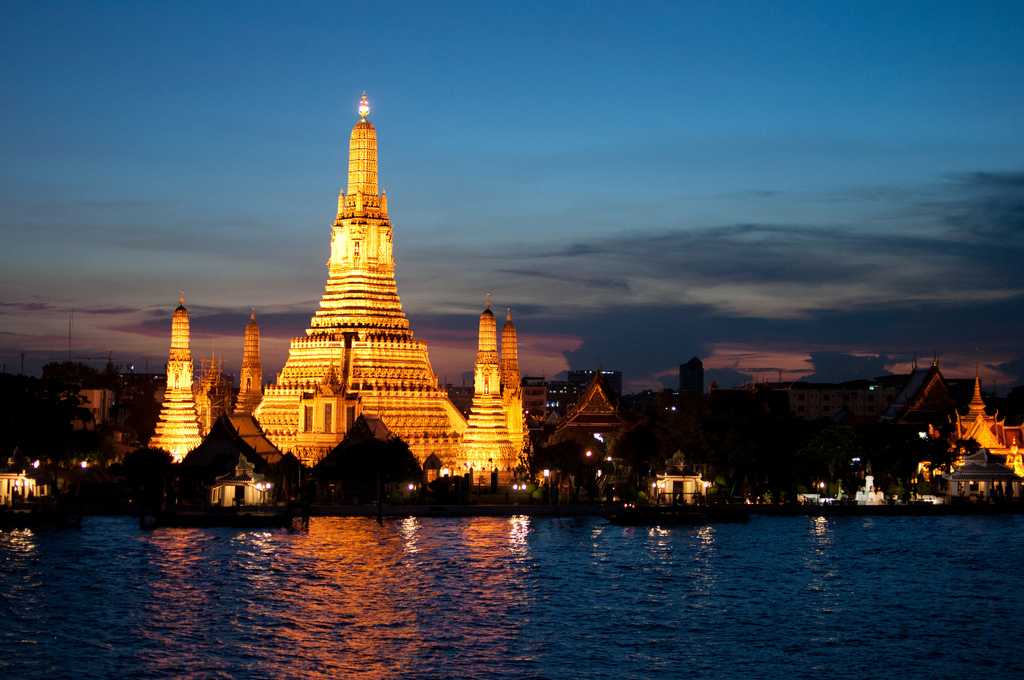
(Source)
The Central Prang
The Central Prang is adorned with a colourful mosaic of china porcelain that beautifies the structure in its own unique way. The mesmerising aesthetic is enhanced every evening when the last rays of the sunset light up every piece of this porcelain puzzle across its western surface. The steep stairs of the central prang make it next to impossible for anyone to climb its entirety, but two of its terraces may be accessed with some efforts. The base of the prang starts from the first terrace and is filled with depictions of mythical characters, mainly scenes of Buddha’s life. The second terrace has representations of the Hindu God Indra and his elephant Airavata.
Wat Arun History
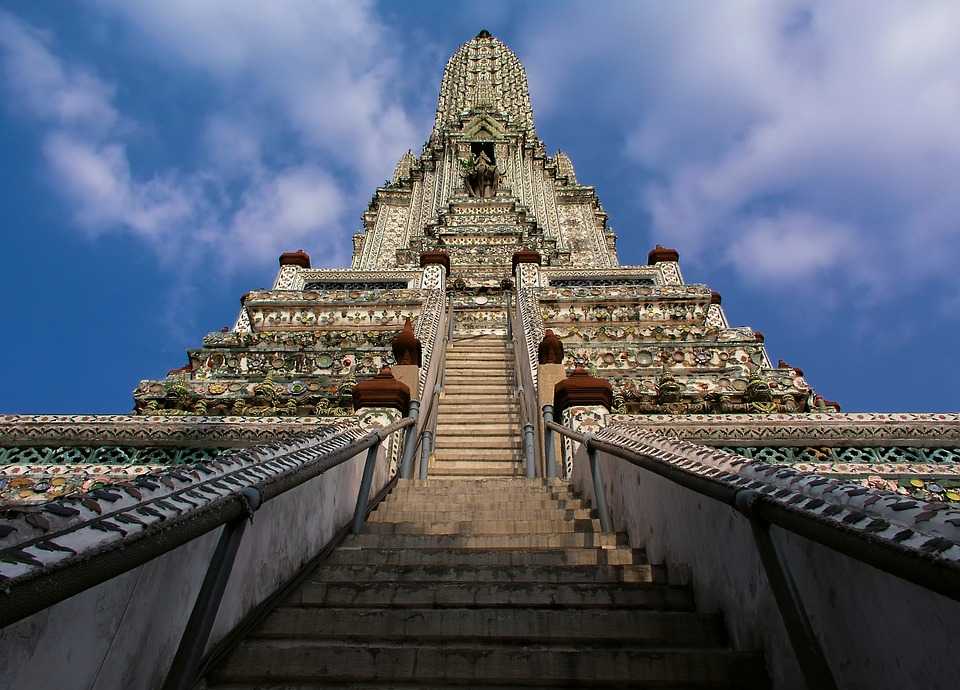
(Source)
King Rama II
King Rama II eventually renamed the temple as Wat Arun, thus revamping it to its former glory fuelled by a modern name.
King Rama III
King Rama III raised the Prang to 79 meters and completed the restoration with a mosaic of multi-coloured china porcelain. All of the efforts of these three kings have resulted in the astonishing structure glittering at sunset that we can now admire.
The Central Prang
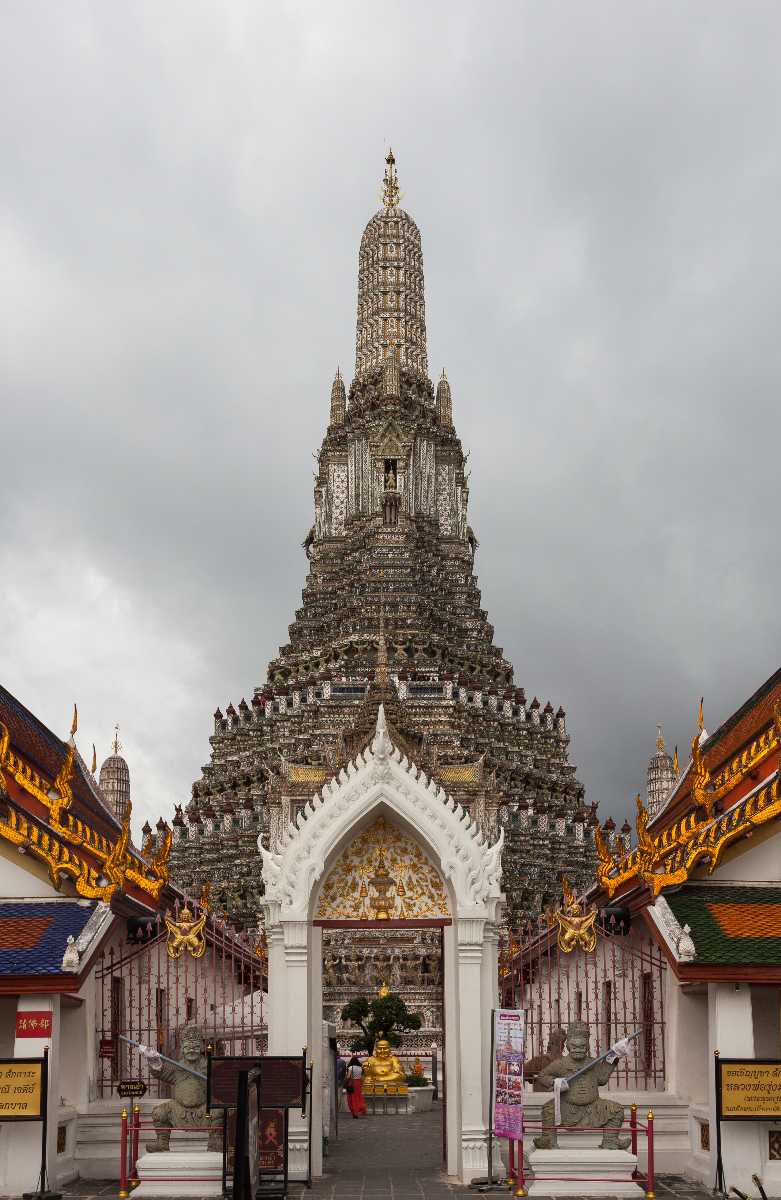
carvings and beautiful iconography
(Source)
Other Wat Arun Structures
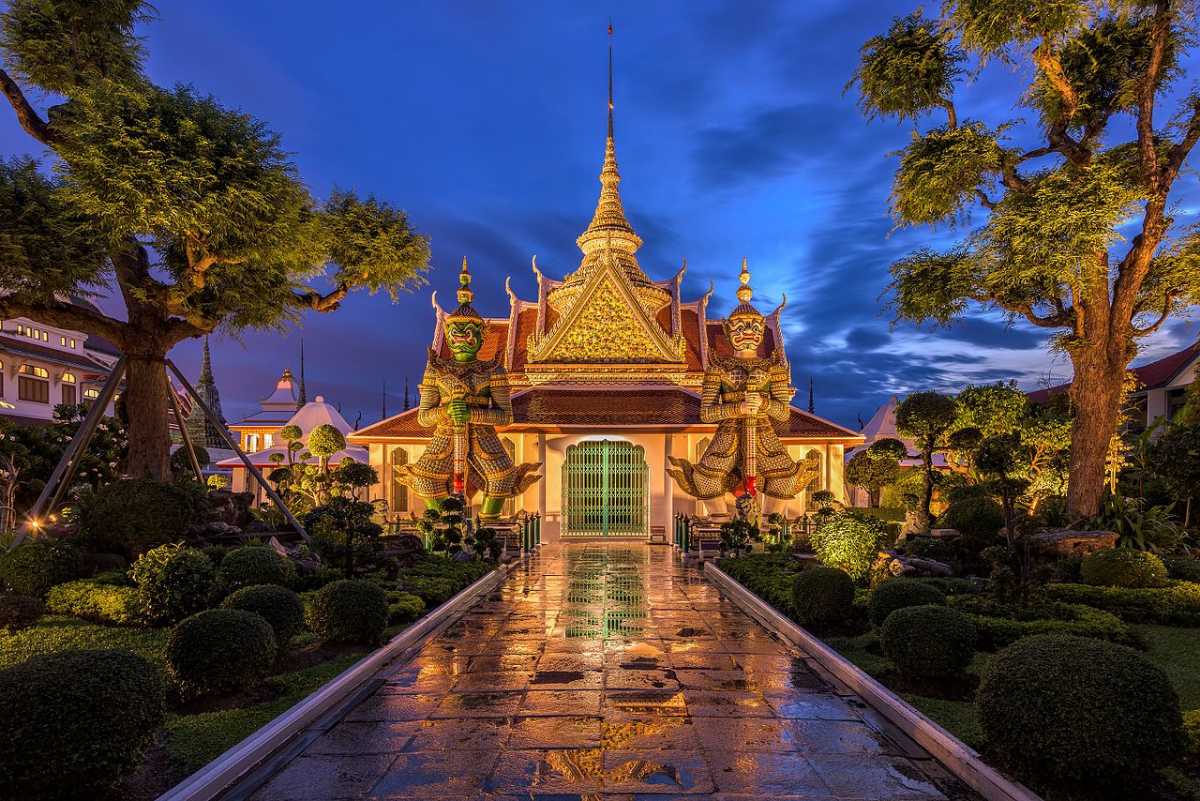
(Source)
- The Prangs: Four smaller prangs surround the central prang in the four directions with depictions of their guarding images facing the four directions.
- The Ordination Hall: The Ordination Hall at Wat Arun houses some beautiful mural paintings portraying the life of Buddha. The image of the Golden Buddha is a peaceful sight to look at. A colourful central spire greets visitors as they enter this hall.
- The view opposite Wat Arun at sunset is a must-see for the visitors.
Cosmology
How To Reach Wat Arun
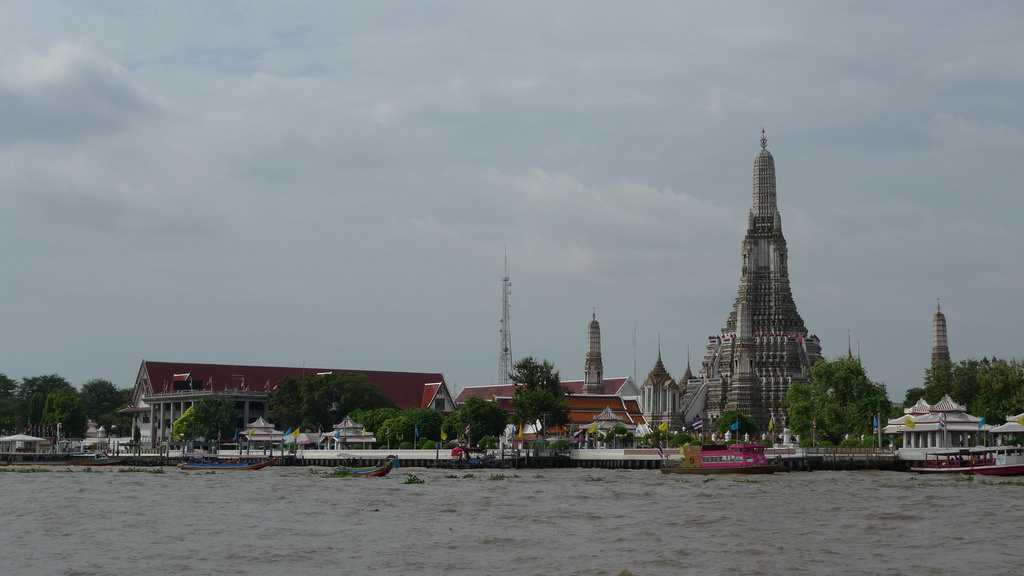
(Source)
